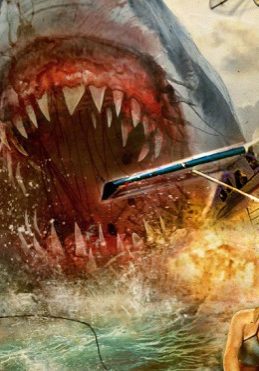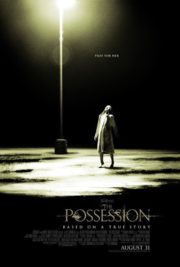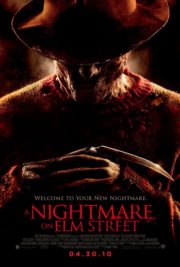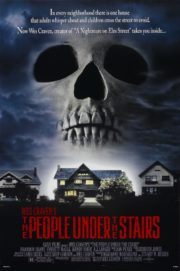Introduction: A Dive Into the Deep End
“On the shores of our ignorance lies a world we never understood.” This intriguing quote encapsulates the exploration and horror that unfolds in the 2014 film “Raiders of the Lost Shark,” directed by Eric Forsberg. The film invites viewers into a chaotic underwater nightmare as a group of friends embarks on a boating adventure. They quickly find themselves entangled in a fight for survival against not only a menacing shark but also the terrifying secrets that lie beneath the waves.
“Raiders of the Lost Shark” is a mix of campy comedy and horror, effectively creating a jarring yet entertaining experience. As the friends plunge into the ocean, viewers are introduced to a blend of absurdity and frights that positions this film as both a parody of, and an homage to, classic horror tropes. With striking visuals and a soundtrack echoing the thrill of ocean adventures, it sets the stage for an unpredictable journey.
Creating the Horror Atmosphere: A Slippery Slope
The film deliberately plays with traditional horror elements to create tension and deliver shocks. Rather than leading with a single, overarching sense of dread, “Raiders of the Lost Shark” opts for an alternating rhythm between humorous moments and genuine suspense. This dichotomy fosters a powerful sense of foreboding, where absurdity soon gives way to horror, and the familiar settings of sun-soaked beaches and sunny weather turned ominous.
Director Eric Forsberg employs a range of cinematic techniques to elevate the suspense. The editing is deliberately disjointed at times, mimicking the characters’ disorientation in the face of the chaos around them, crafting an atmosphere of unpredictability. By juxtaposing lighthearted banter with grisly encounters, the film serves to heighten the emotional stakes, ensuring viewers remain on edge.
Additionally, the exploration of the ocean’s unknown depths adds a level of suspense. Seemingly tranquil waters can harbor danger just below the surface, and this duality fuels the film’s horror atmosphere, allowing viewers to feel the tension build even before characters encounter a shark or the unnerving creatures that lurk below.
The Visuals: A Splash of Color and Chaos
Cinematography in “Raiders of the Lost Shark” is a critical element that helps create its unique atmosphere. The bright, sunny color palette captures the allure of summer adventures, but as the film progresses, the colors shift to darker hues during shark encounters. Shadows become more pronounced, amplifying the sense of danger that lurks unseen.
Camera angles are employed creatively, with close-ups on characters’ fearful reactions contrasting against wide shots revealing the lonely vastness of the ocean. This technique draws viewers into the emotional turmoil of the characters while emphasizing their isolation in the face of terror. It highlights how horror can emerge from mundane scenarios, an effective commentary on the nature of fear itself.
Additionally, special effects, though campy, play a significant role in conveying the sheer absurdity of the film’s horror. The shark visuals, while clearly unrealistic, contribute to the movie’s charm by amplifying the silliness amidst the gore, inviting laughter even in moments of terror.
Soundtrack and Sound Effects: The Auditory Assault
Sound in “Raiders of the Lost Shark” serves as a significant tool in shaping the horror experience. The score utilizes an eclectic mix of dramatic melodies and offbeat comedic tones, establishing a rhythm that oscillates between tension and humor. Epic orchestral pieces heighten moments of shark danger, while quirky motifs accompany the light-hearted banter, reinforcing the film’s dual identity as both horror and comedy.
Moments of silence are carefully timed, allowing viewers to feel a palpable tension before the inevitable jump scare arrives. This technique capitalizes on the vulnerability that silence brings, urging audiences to lean in with anticipation. Surrounding this quiet are sudden, jarring sound effects, like aggressive shark attacks, which contrast with the peaceful ocean ambiance, ensuring these moments resonate deeply.
Furthermore, the incorporation of water sounds—the splashes, bubbles, and ripples—adds a layer of immersion, effectively enveloping viewers in the aquatic setting while simultaneously heightening the stakes when the shark arrives.
Performances: Characters Amidst Chaos
The performances are instrumental in shaping the film’s overall impact. While the characters are crafted with a sense of caricature—representing classic horror tropes—they bring a degree of charm and believability to their roles. The friendships, though shallowly developed, allow viewers to connect with them on a personal level, enhancing the horror when they face peril.
The actors deliver performances that oscillate between fear and humor with ease, contributing to the film’s balance. A few stand out for their comedic timing, injecting levity into situations that could easily turn dire, while others depict genuine shock and terror when faced with the carnage wrought by the mythical shark. This blend of acting styles helps establish a sense of reality amid the absurdity, which is crucial for maintaining viewer engagement.
While some characters may appear as archetypes—like the skeptic or the comic relief—there are moments of depth that showcase their vulnerabilities. It is in these moments that the film truly resonates, as characters confront their fears and face their mortality.
Horror Elements: A Comedic Take on Terror
“Raiders of the Lost Shark” navigates various horror mechanics, melding psychological and body horror with elements of supernatural absurdity. It allows for a unique exploration of fear that is not confined to realism. The psychological horror stems from the fear of the unknown—the vast ocean and what lurks beneath—while body horror is displayed in the gruesome aftermath of the attacks, serving to shock the audience.
Additionally, the film challenges the conventions of the horror genre by interspersing comedic Relief. The absurdity of the shark and the characters’ reactions often teeter on satire, providing a refreshing take on survival horror while poking fun at genre clichés. This blend can polarize audiences; those seeking serious horror may find it lacking, but those willing to embrace its silliness will undoubtedly enjoy the ride.
The scare tactics employed are more reliant on shock rather than gradual builds of terror. Jump scares and gruesome visuals punctuate the narrative, often leaving viewers reeling from the sudden shifts in tone. While this method can stray from traditional horror storytelling, it allows for moments of compelling entertainment that resonates with horror audiences.
Thematic Depth: Beyond the Sharks
While primarily an entertaining horror-comedy, “Raiders of the Lost Shark” touches on deeper themes, such as the consequences of ignorance and the inevitable clash between humanity and nature. It uses the shark as a metaphor for the dangers lurking beneath the surface of ignorance and complacency, showcasing how quickly one can be submerged in chaos when misjudging their environment.
Moreover, the film questions social dynamics within friendship groups. The way characters interact, prioritize fear versus humor, and face the emergence of danger poses questions about their values and beliefs when faced with terror. The clash of personalities adds complexity and reflects on human behavior under duress.
This layer adds a thought-provoking element to the movie, elevating it beyond mere entertainment. It encourages viewers to ponder their own responses to fear and the significance of camaraderie during trials.
Final Thoughts: A Unique Horror Experience
Overall, “Raiders of the Lost Shark” offers a distinct blend of absurdity and horror that may not be suited for every viewer, yet delivers on entertainment and shock value. Its effective balance of humor and terror positions it as a unique entry in the horror landscape, setting aside typical expectations for a straightforward horror film. Is it genuinely frightening? Not in a conventional sense, but does it provoke thought and evoke laughter amidst the scares? Absolutely.
Horror aficionados who appreciate absurdity will likely enjoy this film, while casual viewers might find the blend of comedy and horror appealing. Those seeking extreme scares or realism may want to look elsewhere; however, fans of films like “Sharknado” will likely revel in the chaos.
In conclusion, “Raiders of the Lost Shark” is an entertaining, albeit absurd, take on the horror film genre. Its strengths lie in its humor, character interactions, and thematic explorations, while its weaknesses may stem from its over-the-top execution. For those open to a light-hearted dive into horror, this film could very well become a guilty pleasure, and while it doesn’t push the boundaries of traditional horror, it manages to circle around it with a grin.
**Warning: The film contains graphic violence and themes that may be disturbing to some viewers, particularly related to body horror and gore.**




